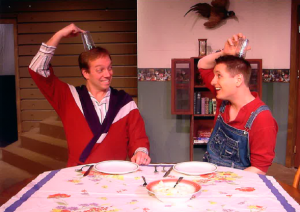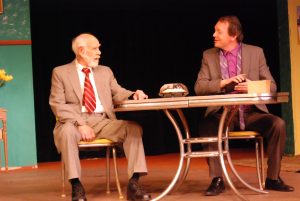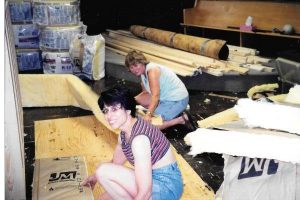
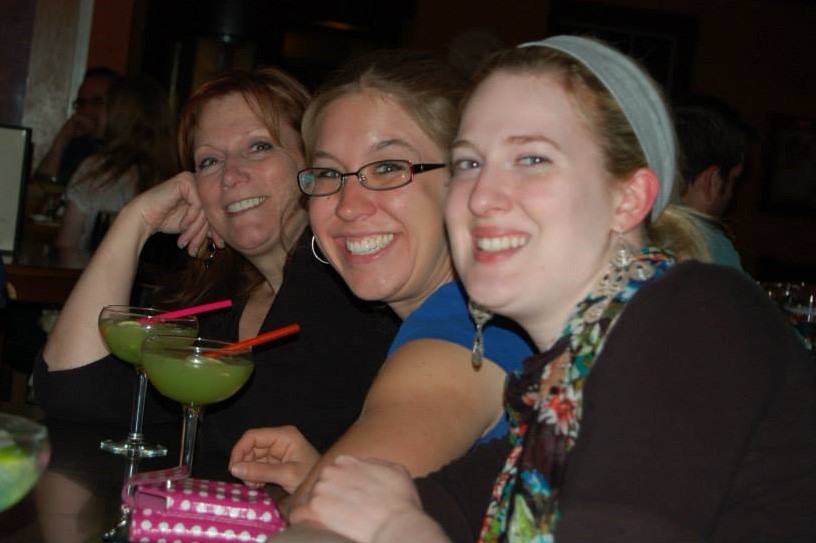

From a small founding group that offered our first production in 1947, Stage Coach Players is a wonderful example of community theatre at its best. Creating an outlet for self-expression, artistic talent, collaborative spirit, and nurturing skills. It is safe to say that Stage Coach Players have added to the social capital of the greater DeKalb community.
Thousands of DeKalb county residents can remember watching a myriad of plays at the old pole barn with the tin roof or at the current theatre. Hundreds remember playing there. It holds so much history for both. The group and the community have taken the responsibility that they all were in this creative process together. The performances draw the audiences and the audiences propel the crew and cast to do the best shows that each can. Entertainment is the name of their game and entertaining is what Stage Coach Players does best.
When the move to 126 S. 5th Street in DeKalb happened, the change not only affected where cast, crew and audience members went to for a live production, but also meant a great number of changes in the participation of those shows. We went from a small area where cast and crew could congregate, build and create to a theatre with a larger backstage, an indoor lobby and a basement about the size of the old theatre on its own. For set designers and builders, the group also incorporated a ‘shop’ in the basement which is currently utilized for set building and building maintenance. At the old theatre, the shop was wherever room was available.
With that, there is a certain fondness many long-time Stage Coach Players members have with the old building. It of course lacked heat in the winter and air conditioning in the summer – something the new theatre in downtown DeKalb offers – but it was home for nearly half a century and stories and feelings of the old building still remind the members of many pleasant and happy days.
“In many ways I miss the old building a lot,” Todd Toles, who acted and designed lights at the old building said. “Yes, it was non-air-conditioned (except if you count the breeze on a hot summer night), and when it rained you sometimes needed to pause because the rain hitting the tin roof was too much, it was for me home.”
It was home, but the calendar to perform lasted about six months from late April through the middle of October. “The new building has heat and air conditioning which the old building did not,” Bernie Schuneman offered. It’s a convenience not only for audiences, but also for the actors and crew. “(It) has allowed us to work year-round without freezing our tails off or sweating down into puddles of water.”
The new building has allowed Stage Coach Players to expand creative endeavors. Since moving to it, they’ve offered a wider variety of theatre-based entertainment to the community. The group has offered Children’s Workshops to help educate area youth in all aspects of the theatre including acting. They’ve done technical workshops and held a playwriting competition and featured the winner, Seeking Flight, in its yearly black box production. Stage Coach Players also performs live radio plays and cabaret-style shows.
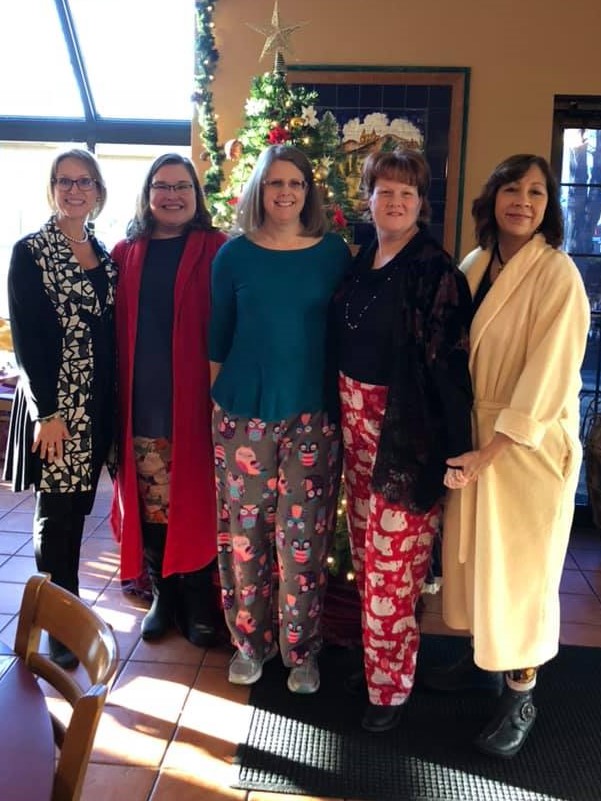
Apart from not being well insulated, the Barber Greene Road location had a tin roof and sometimes when it rained a lot, the sump pump would run at inopportune moments. There was one performance that Schuneman recalls. “We all had to shout our lines as loudly as we could just to be heard. Then, at a particularly dramatic moment when the rain had calmed down just a bit the leading man knelt to sing a lovely song about the leading lady. The sump pump located just offstage reached its limit and began pumping VERY loudly.”
With a smaller green room area – some might say cramped – the building leant itself to offering the casts and crews a close bond. “There was a looseness among the casts and crews because of the extra challenges of being able to do such good work in an old army castoff where weather was often another challenge,” Marilyn James remembers. “The challenges were part of the fun and the closeness of the workers and real community feeling.”
Darlene Hillman, who made her Stage Coach Players debut in Auntie Mame in the old building, said, “We dressed in (what was) basically a dead-end hallway, with a scrap of material for a door. You got in – you got out and there was no personal space. There were no cell phones, or electronics. You talked – to everyone.” Adding later, “I think there was a lot more general camaraderie in the old theater, as we made do with a LOT less room, stuff and designated areas!”
It wasn’t simply the green room area that was smaller. The new theatre has a large lobby and the auditorium with fewer seats is more spacious. “The biggest difference to me,” long-time theatre member Andee Larson offered, “Is that in the old theater you could stand pretty much anywhere in the building and shout for someone and they would hear you!”
D’Ann Hamilton-White, who has worked onstage and backstage with Stage Coach Players since the 1980’s pointed out that technology today is different from what was available at the old building. “I ran lights for several shows at the old theater. The dimmer board consisted of a series of long handles which were operated individually,” adding that the operator had to manually move each handle. “If the lighting design called for several different dimmers to be increased or decreased simultaneously, a long stick could be used to move 3 or 4 or 5 dimmers at one time. But if the required dimmers were not next to one another, each dimmer had to be operated separately using the left hand and the right hand. And often a knee as well.”
The stage floor in the old building had been used for many performances and through the magic of time and severe weather changes was not as sturdy as it had been. It was also not completely level front to back. A plumb set, as Joe Burchfield and many of the other set designers would say, was extremely difficult to accomplish. Actors on stage during big dance numbers could literally feel the stage bounce. Depending on the dance number, it almost felt as though you were on a trampoline. And yet, we always relished the times at the old theatre.
The one thing however that has not changed even with technology or space, is the chance to meet and become friends with people you may never have met had you not become involved with Stage Coach Players. Friends you spend time with in situations other than just at the theatre.

